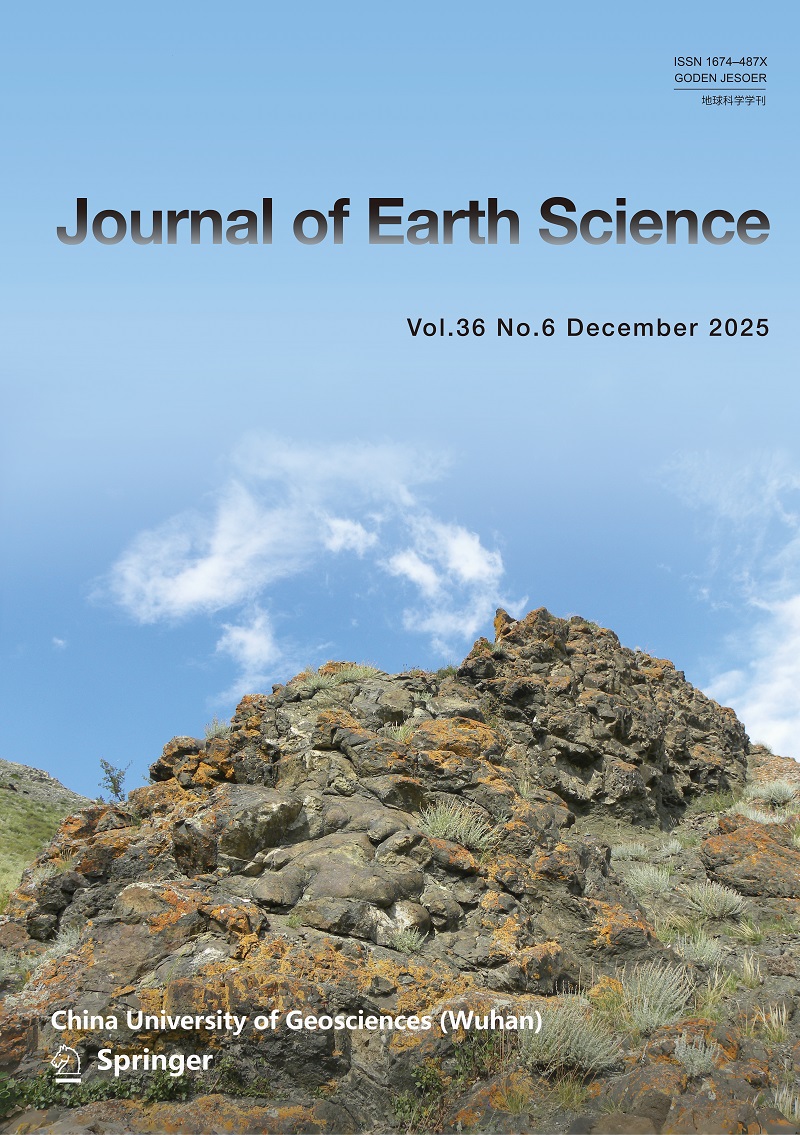, Available online , doi: 10.1007/s12583-025-0207-4
Abstract:
The Jinchuan Ni-Cu-platinum-group element (PGE) sulfide deposit formed in a magmatic conduit system, part of which is now represented by the Jinchuan intrusion, which has been divided into four segments (III, I, II-W, II-E, and IV) by a series of NEE-trending faults. Variability in size, morphology, and mineralization raises the question of whether these segments were emplaced along a single conduit or distinct conduits that operated independently. Chalcophile elements exhibit variable distribution among base metal sulfides (BMS) and are useful for assessing the evolution of magmatic sulfide mineralization. A comparative analysis of the chalcophile element distribution among BMS in these segments may, therefore, help clarify this ambiguity. Assessing the processes that control the distribution of chalcophile elements in BMS is complicated, however, in part, due to the overlap of their concentrations in different BMS. Here, we apply partial least squares-discriminant analysis (PLS-DA) and Random Forest analysis to a dataset of BMS (pyrrhotite, pentlandite, chalcopyrite) chemistry to characterize and compare the chalcophile element signatures of BMS in segments I, II-W, and II-E. The optimized PLS-DA models based on TABS (Te, As, Bi, Sn, Sb), PGE, Ni, Co, and Re contents of all BMS, and the Random Forest model based on Pd contents of pentlandite, can effectively discriminate amongst the segments of the Jinchuan deposit. Notably, BMS in segments II-W and II-E have higher concentrations of TABS compared to those in Segment I, whereas those in Segment I have higher concentrations of chalcophile elements (Ir, Ru, Rh, Os, Ni, Co, and Re) that are compatible into monosulfide solid solution (MSS) compared to those in segments II-W and II-E. This finding suggests that the sulfide liquid in Segment I segregated from a magma that was less crustally contaminated with TABS-rich siliceous material and was less evolved compared to the sulfide liquids in segments II-W and II-E. Moreover, the PLS-DA models effectively differentiate among textural types of sulfide ores in Segment I. For example, the pyrrhotite model demonstrates that massive ores have higher Os, Ru, Ni, and Co contents compared to disseminated and net-textured ores, whereas the latter two ore types are enriched in Pd-Mo-Pb and Zn-Sb-Sn, respectively. The PLS-DA models cannot, however, distinguish between the textural types of ores in segments II-W and II-E. This implies that the different textural types of ores in Segment I were likely formed in a more dynamic conduit than those in segments II-W and II-E, which facilitated the formation of sulfide droplets with variable chalcophile element compositions. In contrast, the ores in segments II-W and II-E likely formed by physical percolation of sulfide liquids in a less dynamic conduit (i.e., the magmas in these segments were less mobile and more viscous). As revealed by whole-rock Sr-Nd isotope evidence from previous studies, the different kinetic characteristics of these segments can be attributed, in part, to variable degrees of contamination by siliceous material, which may have resulted in the melts containing variable amounts of crystalline cargo, affecting their viscosity and mobility. Together, these features highlight the complexity of the Jinchuan intrusive system, where the parental magmas in segments I and II underwent different evolutionary processes, leading to different BMS compositions in these segments.











